A Personal Reflection On Therapy & Creative Expression (Part I – You Are Here)
An Exploration Of Ongoing Work In UXD & Generative A.I. (Part II – Read More)
A 5-Step Plan For Addressing The Logic Of The Impostor Using Behavioural Therapy Techniques (Part III – Read More)
Table of Contents
IMPOSTOR SYNDROME
Impostor syndrome, also known as impostor phenomenon or impostorism, is a psychological experience in which a person suffers from feelings of intellectual and/or professional fraudulence.
One source defines it as "the subjective experience of perceived self-doubt in one's abilities and accomplishments compared with others, despite evidence to suggest the contrary.Wikipedia
Many of us can relate to having experienced self doubt at some point in our professional careers:
Relating to the work that we have produced
We fumble an important meeting or a big pitch by arriving underprepared or by failing to follow a crucial component of the original prompt;
Relating to those we are in collaboration with
The ire of a superior feels directed towards us for reasons unknown, inspiring moments of uncertainty about our job security or our real place in the architecture of the organization;
Relating to the hierarchy of the organization
A rumoured series of layoffs leaves you wondering if you’ll be left behind as a result of having misplaced the necessary confidence in oneself to navigate a difficult job search;
Relating to our immediate social fabric
We feel a little stuck in a role and are struggling to envision our next career move; and it feels like everybody knows.
If we swing and miss at what feel like the pivotal moments in our careers-to-date, there’s a risk of internalizing feelings of shame, rejection, failure and loss that we might experience on the downturn; that is, unless we remain mindful and dialectical about the surrounding contexts and circumstances.
It can sometimes feel like the volume of our perceived or even tangible failures is dialed up so much louder than the symphony of our successes.
ADDRESSING THE IMPOSTOR WITHIN
Over the last several years, I’ve placed a lot of structure and focus onto resolving internalized fears about rejection and failure, particularly in the context of academia, profession and vocation.
I’ve set out on this quest in order to shatter my own glass ceiling; as a result of these efforts, I hope to achieve new heights of vocational success in the field of design after a long period of hibernation.
I credit my sense of triumph in this durational pursuit with two things:
- The development over time of key passion projects in areas of deep personal interest; ongoing works of Personal Creative Expression, or PCEs
- The practice-based and trauma-informed outpatient therapies I practiced in the care of a 2SLGBTQIA+ community healthcare environment

MARSHA (LINEHAN); MARSHA (P. JOHNSON); MARCIA (BRADY). Fabric heat transfer on cotton blend crewneck, 2023.
For a total of nine months, I attended weekly therapy: six months of Dialectical Behaviour Therapy (DBT), and three months of Cognitive Processing Therapy (CPT).
At the culmination of the first six months, I made each of my DBT therapists a crewneck sweater to express my deep gratitude for their kindness and support on that leg of my journey.
I handed these sweaters off a little awkwardly on the last day of group. At that moment, I became a touch overwhelmed by a sense of shame and embarrassment about what I had just done by giving them these gifts.
Gary and Larry (pseudonyms for privacy) expressed disarming warmth and gratitude in response to this gesture. They praised my diligence and commitment to therapy over the course of the six months.
I felt even more uncomfortable now that they were praising me and complimenting my efforts; I struggled to accept their praise. I worried that it made me a pushover, a try-hard, brown-nosing with my therapists in the hopes that they would like me.
I worried that the whole act was an unconscious defense mechanism on my part, designed to obfuscate the fear that I was actually untreatable, and that I had faked my way through therapy.
At a previous time several years ago when I would recount my time in post-secondary academics, I would often refer to having “faked” my way through parts of my university education. There was no faking it though; I was there, and the experience is well-documented.
When I awkwardly handed Larry and Gary the sweaters, I harboured a feeling of self-doubt that had been marinating in my thoughts for a couple of weeks; the thought had previously occurred to me of the possibility that I had not completed enough therapy in order for it to be effective for me long term, or perhaps I was part of the statistical set to whom therapy would provide little benefit. Perhaps whatever I did accomplish, I didn’t do “well enough” for the therapy to “work”.
Alternatively, is it possible that the misplaced discomfort and self-doubt I felt in that moment were actually signs of the impostor’s logic, guiding my emotional responses in realtime?
PCE's VS. THE IMPOSTOR
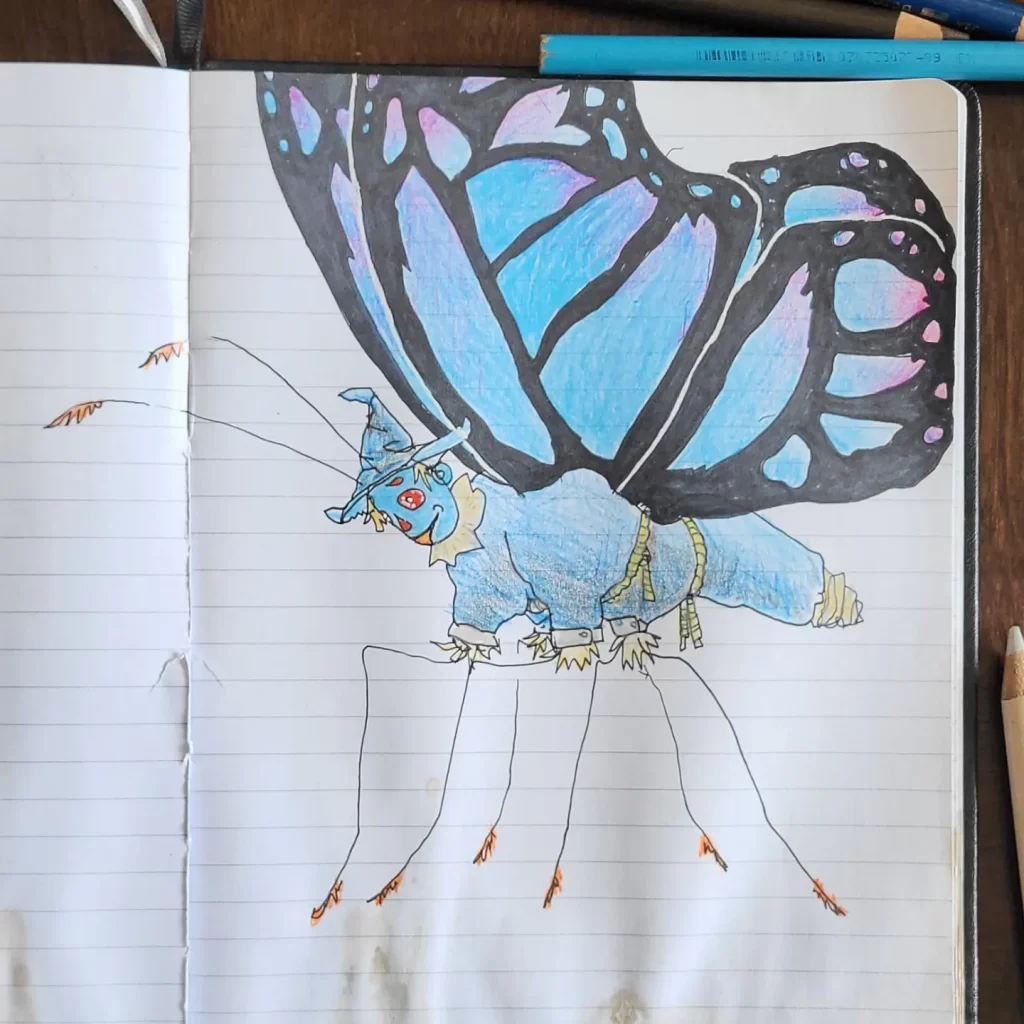
“Mr. Buttercrow”. Mechanical pen & Colour Pencil on Lined Archival Paper. Matthew Crans, 2023.
Since rekindling the fire at the base of my creative spirit, I’ve reawakened deep and positive emotional experiences related to acts of personal creative expression.
Subsequently, through continuously performing acts of PCE for the sake of the gratification that I now associate with the experience, I’ve managed to cleverly circumvent some automatic thinking that I co-relate with the experience of impostor syndrome.
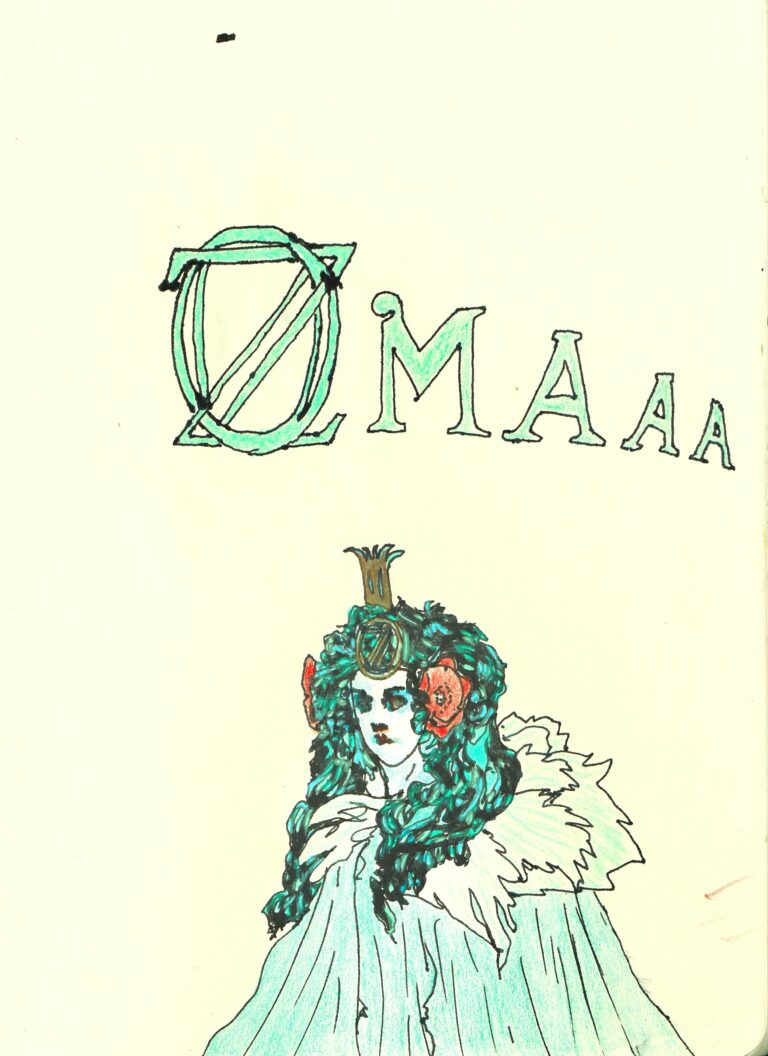
“OZMAAA”. Fountain Pen & Colour Pencil on Archival Paper. Matthew Crans, 2024.
This gratification via creation is an experience I recall from an earlier stage of development in adolescence and teenaged years, and later on in my early career; I would often become airborne with the thrill of creation.
My recent PCEs have routinely rewarded me with feelings of pride, satisfaction, accomplishment—even gratitude surrounding my work.

“Dorothy & Ozma Meet In The Mirror”. Fountain Pen and Colour Pencil on Archival Paper. Matthew Crans, 2024.
At an earlier time in this multi-year epic, these gratifying emotional experiences following acts of creation would often sit in stark contrast with the logic of the impostor.
When I was making initial attempts to relight my internal creative spark for design and UX, the appearance of the impostor would often derail my progress.
- A moment of clarity or inspiration would guide some constructive thought and inspire digital action;
- The impostor would erupt into my field of vision; its logic would overcome my thoughts, often preventing me from executing effectively.
FUTURESHOCK
In addition to disquieting encounters with the impostor, I was also experiencing profound moments of technological futureshock: a sense that technology is moving just a little too fast for me to keep up.
The concept of futureshock is explored in the 1970 theoretical work of the same name by American Futurists Alvin Toffler and Adelaide Farrell. They define this jarring phenomenon as:
A certain psychological state of individuals and entire societies, and a personal perception of: too much change in too short a period of time.
Alvin Toffler & Adelaide Farrell, Futureshock (1970)
Futureshock would rear its ugly head during mission-critical moments when I was attempting to lay new foundational bricks on a personal journey of re-discovery in UX:
Is generative A.I. about to abolish my future-job before I even future-land it?
Was David Mitchell’s 2004 novel, Cloud Atlas, prescient in its imagination of the server/bartender of the future in the character of Sonmi-451?
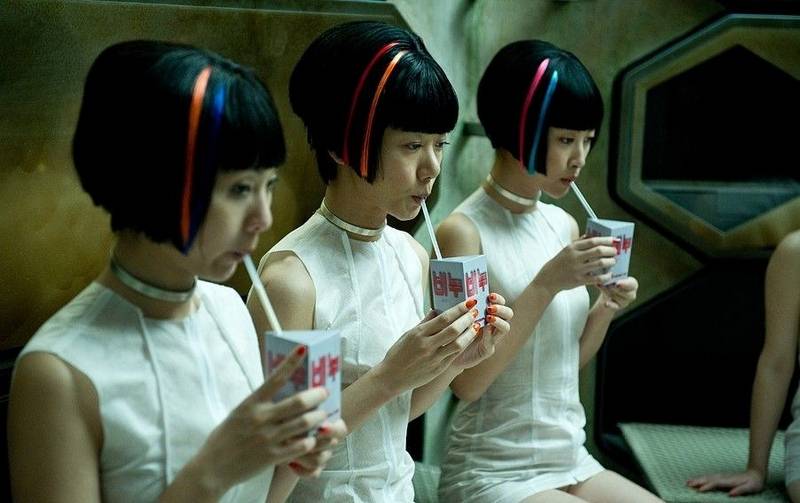
Production still Depicting the Sonmi's from the 2012 film adaptation of David Mitchell’s speculative fiction novel, Cloud Atlas.
In the segment of Mitchell’s novel titled “An Orison of Sonmi-451”, the title character lives in a dystopian Neo-Seoul, where she is a clone born into slavery at the behest of a corporate restaurant chain of the future.
It’s through an archetypal hero’s journey that Sonmi-451 unmasks the architecture of her indentured servitude to finally emerge from her experiential matrix and forge new meaning. She yearns for the freedom to partake in definitively human experiences and she understands her thoughts, emotions and actions as radical and defiant.

A sketch by Laura MacMahon depicting the structure of the novel Cloud Atlas by David Mitchell. The novel is structured a bit like a Russian matryoshka doll.
A birthmark on the character’s neck references a timeless ancestral consciousness that connects Sonmi-451 with the other principal characters starring in the nested short stories which comprise the complete Cloud Atlas. It suggests that this hero’s journey is widely relatable, and reflective of a common human experience, regardless of time or distances between the players at the guild.

The main characters of each story in Cloud Atlas share a repeating birthmark in the shape of a comet; a symbol of their ancestral or collective consciousness.
Living in the genre of dystopia, this segment of the novel has a predictably sour ending. However, UX design principles echo the suggestion that history and human psychology have provided us with some consistent paths and bookends when it comes to designing for human experiences; we can find these in the atlases of user insight which have been gathered over time since the inception of HCI.
Ellen Lupton, author of Design Is Storytelling, talks about storytelling in designed experiences in this Interaction Design Foundation Masterclass; she illustrates metaphors found in epic yarns like The Wizard of Oz and Hansel and Gretel. The authors of these stories employ the formal elements of the yellow brick road and the path dotted with bonbons as important mechanisms for narrating the hero’s journey; AKA, for guiding the user’s experience.

Film still from The Wizard Of Oz (1939). From Left; The Cowardly Lion, Dorothy and Toto, The Tin Woodman and The Scarecrow skip along the yellow brick road towards their ultimate destination: The Emerald City.
DIGITAL MEDIA THING
There are lots of examples of distorted thinking that can appear in the logic of the impostor, and which can often make failure feel like a clearly defined line in the sand.
Say, for example, that we pay $14.99 for a beginner course in some digital…media…thing.
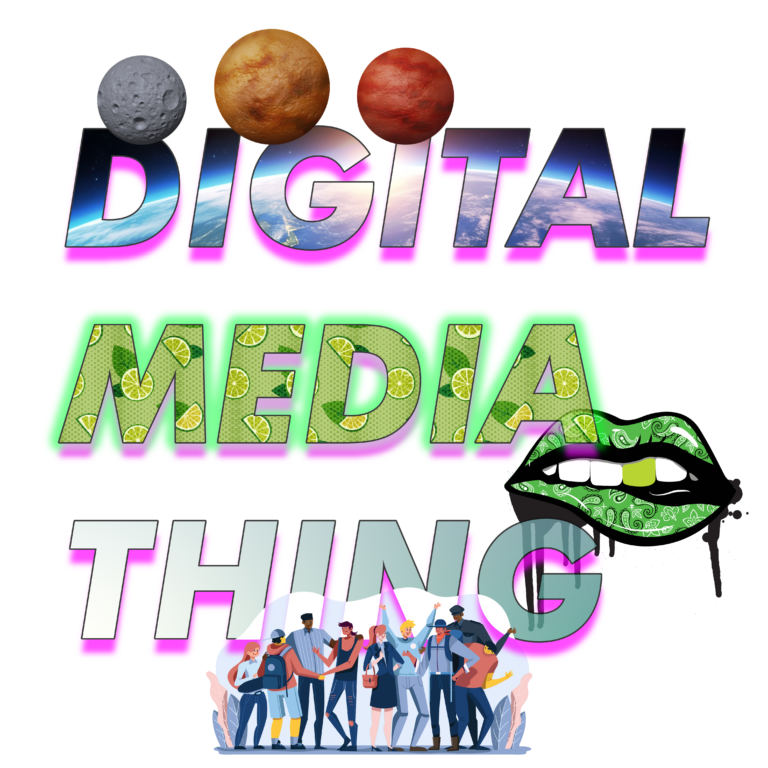
DIGITAL MEDIA THING. Digital Collage, 2025. Various Artists found on Vecteezy.
We do a couple of lessons, and then we don’t follow through with completing the course and receiving the certificate.
Maybe you can relate to feeling a slight sense of shame or embarrassment in the aftermath, when you specifically recall that you’ve exposed within yourself a disappointing:
Failure to follow through.
EPIC FAILURE
I want to challenge some possibly common notions about failure and learning which I have admittedly found myself defaulting to quite often in the past:
- For having begun and abandoned the course, have we objectively failed in our original goal? What was the original goal of the exercise in the first place? What was the desired outcome and why?
- What are the real consequences of not completing the course? Is the gravity, or even the very presence itself of internal discomfort warranted? How much is warranted and for how long is it warranted?
- How much of this experience is conditioned? Who taught us that opening a book and not finishing it is an indication of failure, and by what measure does that notion become true or false?
- What if we only need a short section of the book or course in order to progress forward in a bigger-picture goal?
- What if the incomplete journey, just as it was, helped us answer a bigger question we had?
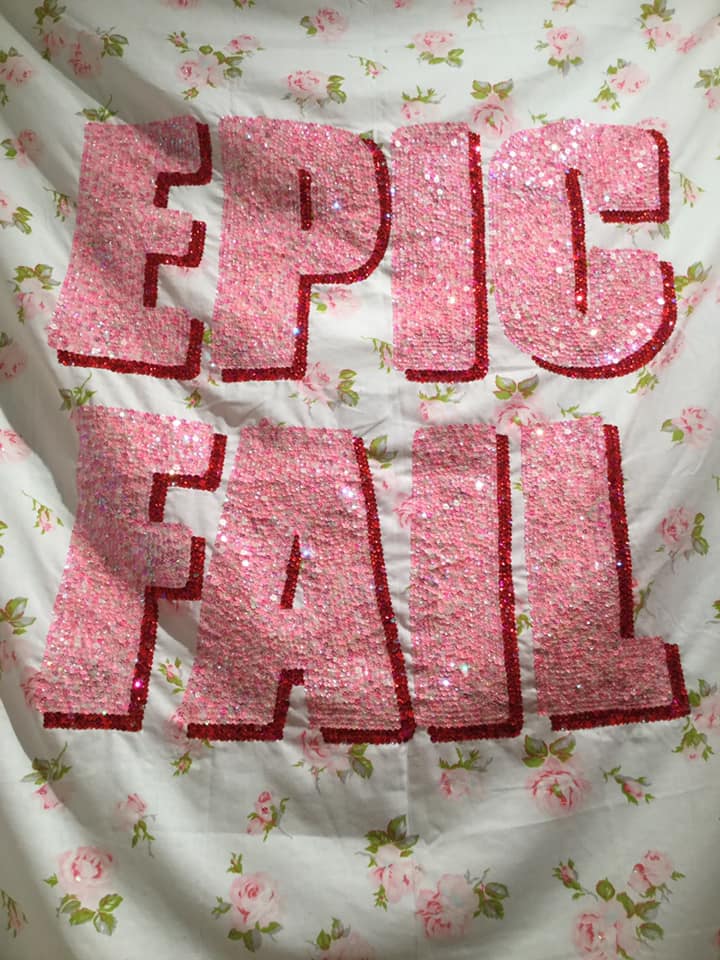
EPIC FAIL from TEXTiles, Assembly Gallery, Hamilton, ON. Sequins on bedsheet, 2019. Part of an ongoing work by queer Canadian visual artist, Andrew McPhail.
Is it possible to turn the dead-end logic of the impostor into an arrival at a crossroads? Perhaps one where a different option is selected at the precise moment that the impostor triggers our nagging or deeper-felt sense of self doubt?
Instead of letting our minds wander down the path of epic failure that has been pre-booked for us with shame at its terminus, can we instead aim for the…
EPIC TALES:
An overall attitude towards growth and learning which prioritizes the
accumulation of experience,
rather than an experience’s perceived completeness.
Can the arrival of the impostor actually be the catalyst for the real transformational growth within ourselves that we seek?

In Part II, we dive into structured therapy and we explore two ongoing projects; Effectively: The DBT App and Expanding Oz